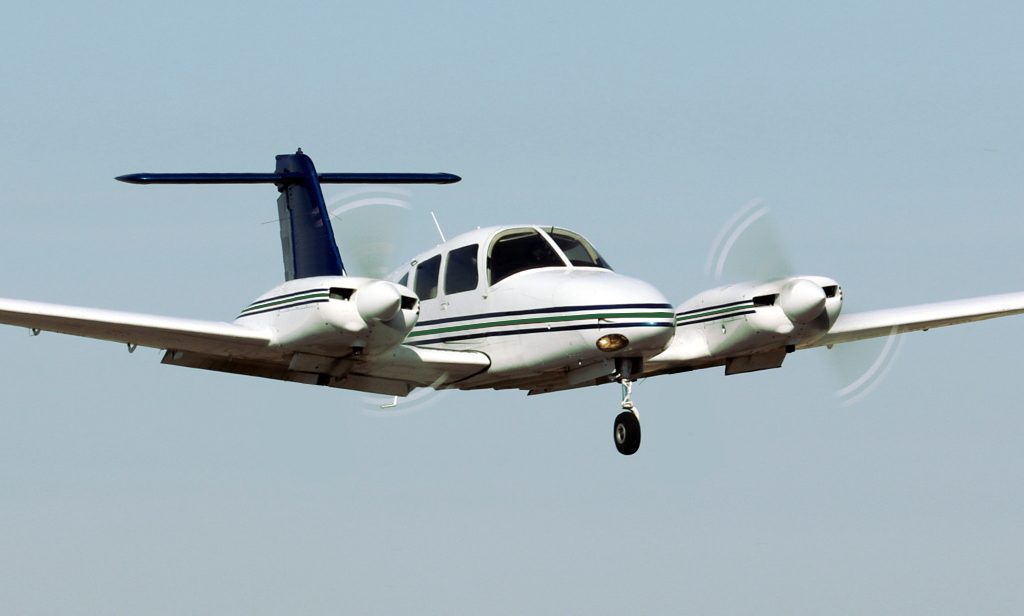By Darragh Owens
When decision-making theory meets reality, the learning curve gets steep
Aeronautical decision-making during private and commercial pilot training, is an important part of the theoretical knowledge syllabus. It is, however, possibly one of the ground subjects most disconnected from the practical reality of flying. It’s clearly important to study the various concepts and models that are currently (they evolve as time goes by) promoted to underlie pilot decision-making. But putting them to the test in real situations is the only way to be sure they have become embedded in the pilot skill set.

This was brought home to me during an instructional flight some years ago. I was with Dave, a rather nervous and ‘behind the aeroplane’ kind of student, who was training for his multi-engine rating. Frankly, the organisation I was then working for should never have let him progress to this stage. But he was trying his best, in a rather over-focused way, to get everything right. We had just become airborne on a pleasant VFR day. Dave was busy with the after-take off checklist and had declared it “Complete“, with an uncertain tone and glance, which instructors will recognise, as something more of a query than a statement. Unfortunately, I pointed out, the checklist wasn’t complete, as we had one green light on our landing gear indicators, showing the nose wheel was still down. I could see Dave mentally kicking himself for having verbalised the check complete while not noticing the light. I told him to fly the aeroplane straight ahead, and to keep us below gear retraction speed while we assessed things. Immediately I could see beads of sweat breaking out on his brow. He checked in the mirror and sure enough the front wheel was down. But were the other wheels up? We had definitely heard the gear motors running. I gave ATC a brief heads-up and was granted a chunk of free airspace. I decided to try extending the gear and pushed the switch. No motor noise this time. Still only one green light. Flipping the switch to “up” position got no response either. The whole system was screwed up. Poor Dave’s knuckles were now whitening, and I could tell he was experiencing considerable anxiety. It was a moment for a calming discussion, and a cool assessment of our situation.
During ground training for the ATPL theory subjects, our students had explored and discussed a number of decision-making models. They are generally specified in mnemonics, used as an aide-memoire by various operators with acronyms such as DODAR, DECIDE, PIOSEE, FORDEC, etc. These are all summaries of the same process: identify the problem, consider various solutions, choose one of them, review the results. While I was, of course, worried about our current problem, I thought it provided a useful opportunity for a teaching moment. The weather was benign, we had a decent amount of fuel (ie time), and we were in uncluttered airspace. I took control of flying the aeroplane and asked Dave to assess the situation, then to make a decision based on our taught model (I think it was DODAR at the time). He froze, struggling to remember D (for Diagnose the problem). No amount of coaxing would elicit the correct word, so I prompted him and we discussed the operational state of the landing gear, verifying it with a low level flypast, where Bill, the controller in the tower, told us that, indeed, we had just the nose wheel down. After a discussion with our engineer on the company frequency I asked Dave about O (for Options) and again his memory was blank. The engineer and I had decided (D for Decision) the only choice was to activate the emergency gravity-drop gear extension. This would be a one-shot deal: if it didn’t work then we would be entering a new echelon of risk and prickly decisions. In briefing Dave on all of this this I could see his anxiety levels soaring. I had to consciously compartmentalise my concerns from being affected by (while endeavouring to assuage) his own. In any event we set things up at the correct speed and I instructed him (A for Assign) to release the gear with the emergency lever. There was a resounding thump and immediate three green lights on the indicator, which was somewhat reassuring. It clearly gave Dave a sense of relief and he brightly volunteered “R for Review!” As part of that action we flew past the tower again and Bill said that all the wheels looked to be down and in the correct position. I said I would fly outbound for a minute then will turn in for landing. Given the uncertainty of the gear I requested crash crews to stand by.
That was when things got even more interesting – because the next thing Bill said was “uh, Darragh I have the airport manager here and he’s wondering if you could circle for a bit while we get line traffic in and out?”. His point was that in their small single-runway airport, if my gear collapsed on the runway they would have to divert the incoming regional airliner. A similar recent incident was fresh in everyone’s mind. This would have meant us boring holes in the sky for probably an hour or more. Dave, trying to be helpful, and perhaps subconsciously deferring to the authority figure of the controller, said he wasn’t pressed for time. I shot him a rebuking glance and simply said a firm “Negative” on the radio. There was a pause on the airwaves, while consultations in the tower no doubt continued. Then came a slightly meeker “Well, it would be very useful…” from ATC, to which I firmly replied, “Bill. I. Am. Turning. Inbound. For. Landing.” I was hoping he would pick up the subtext: clear me to land, or we will have to declare an emergency. As I explained to Dave beside me, and later to ATC, their suggestion made no sense for us and would have significantly worsened our risk situation. It would leave us hanging in the air with an uncertain gear deployment, but what would happen if the landing traffic itself got stuck on the runway? Then we would have to travel, gear down, fuel depleting, daylight fading, cross-country to a large airport and repeat the whole performance all over again. Removing the Swiss cheese, layer by layer. And if our gear did then collapse on a busy jet runway, an even greater mess would ensue. (I’ll be honest, getting home for dinner was on my mind, too). Again there was a pause from ATC, but eventually we received a crisp “Cleared to Land”.
Well, we landed uneventfully, the rescue crews returned to base, and I did get home on time. Dave regained some of his colour, but I suspect the episode had put him off the whole game. Having scraped his CPL/IR some time later, he never went back to aviation. That was a regrettable but good decision, I felt, although certainly one which should have been taken far earlier. The event firmly impressed on me how the theory and practice of aeronautical decision-making can be bridged only by experience. From then onwards I introduced formal decision-making practice into less challenging, routine situations while aloft: even quite simple ones, where students can rehearse a structured process while airborne, without overwhelming pressure. This helps them to internalise a systematic approach, to park their anxieties as much as possible while they deal with problems, and (one hopes) will make it easier for them to coolly analyse events and options when ‘The Big One’ eventually occurs in the air.
Which it surely will.







